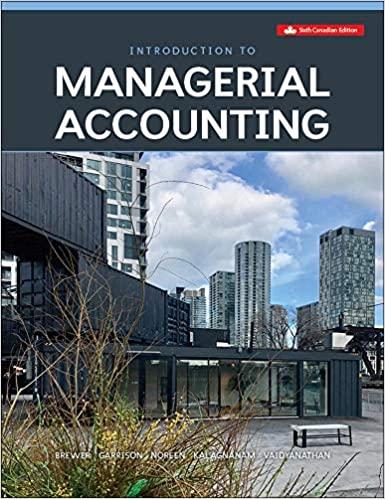A carmaker company is thinking about introducing a new sport car. The firm already produces different types of cars including luxury cars. It is a 10 -year project. It would require a $200 million investment. a/ The firm estimates that they will be able to sell each year 20.000 cars at $40.000 each. However, 25% of the customers will come from existing customers of the firm and who buy luxury cars. We assume that the price of the luxury car is $35,000. What will be the incremental revenues of the project? b/ Let's suppose that the project will bring additional sales of $90 million each year from posters, gadgets, and oth secondary items. What is the new incremental revenue? e/ The cost of goods sold will be $600 million the first year and increase by 1% every year. In addition, the firm considers to launching an advertising campaign. It will cost $10 million the first year, $6 million the second year, and $3 million the following two years, then no thing after. What are the incremental EBITDAs? Show on a spreadsheet all the relevant items like in an income statement until EBITDA for year 0 and each of the following 10 years. d/ Let's suppose that you depreciate linearly the \$200 million in plant and equipment linearly over the 10 years. Also, there is no debt, and the tax is 35%. What are the incremental net incomes? Again, show on a spreadsheet all the relevant items like in an income statement until net income for year 0 and eac of the following 10 years. (Of course, take the spreadsheet from cl and continue until net income) e/ Let's suppose that the firm will have the following results the next 10 years for the project itself: What will be the incremental FCF? Again, show on a spreadsheet all the relevant items like in a statement until FCFF for year 0 and each of the following 10 years. (Of course, take part of the spreadsheet from d/ and continue until FCFF) f/ Calculate the NPV of the project using the cost of capital of Ford tell me how you found the cost of capital of Ford). Show on the spreadshect. g/ Calculate the IRR of the project. Show on the spreadsheet. h/ Draw the NPV profile Show on the spreadsheet how you get the exact curve. i/ Suppose that the firm adopt a MACRS depreciation instead. What would be the NPV then? Discount again with the cost of capital you found in homework 1. In the MACRS system, depreciation is not calculated linearly, but instead, the percentage of the asset's cost that may be depreciated each vear is established and listed in the following table: k/ Draw the NPV profile of the project for the two cases, when we depreciate linearly, and we depreciate according to the MACRS schedule. Show again on the spreadsheet how you got the two curves. A carmaker company is thinking about introducing a new sport car. The firm already produces different types of cars including luxury cars. It is a 10 -year project. It would require a $200 million investment. a/ The firm estimates that they will be able to sell each year 20.000 cars at $40.000 each. However, 25% of the customers will come from existing customers of the firm and who buy luxury cars. We assume that the price of the luxury car is $35,000. What will be the incremental revenues of the project? b/ Let's suppose that the project will bring additional sales of $90 million each year from posters, gadgets, and oth secondary items. What is the new incremental revenue? e/ The cost of goods sold will be $600 million the first year and increase by 1% every year. In addition, the firm considers to launching an advertising campaign. It will cost $10 million the first year, $6 million the second year, and $3 million the following two years, then no thing after. What are the incremental EBITDAs? Show on a spreadsheet all the relevant items like in an income statement until EBITDA for year 0 and each of the following 10 years. d/ Let's suppose that you depreciate linearly the \$200 million in plant and equipment linearly over the 10 years. Also, there is no debt, and the tax is 35%. What are the incremental net incomes? Again, show on a spreadsheet all the relevant items like in an income statement until net income for year 0 and eac of the following 10 years. (Of course, take the spreadsheet from cl and continue until net income) e/ Let's suppose that the firm will have the following results the next 10 years for the project itself: What will be the incremental FCF? Again, show on a spreadsheet all the relevant items like in a statement until FCFF for year 0 and each of the following 10 years. (Of course, take part of the spreadsheet from d/ and continue until FCFF) f/ Calculate the NPV of the project using the cost of capital of Ford tell me how you found the cost of capital of Ford). Show on the spreadshect. g/ Calculate the IRR of the project. Show on the spreadsheet. h/ Draw the NPV profile Show on the spreadsheet how you get the exact curve. i/ Suppose that the firm adopt a MACRS depreciation instead. What would be the NPV then? Discount again with the cost of capital you found in homework 1. In the MACRS system, depreciation is not calculated linearly, but instead, the percentage of the asset's cost that may be depreciated each vear is established and listed in the following table: k/ Draw the NPV profile of the project for the two cases, when we depreciate linearly, and we depreciate according to the MACRS schedule. Show again on the spreadsheet how you got the two curves








